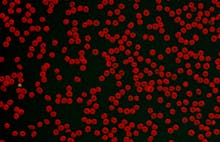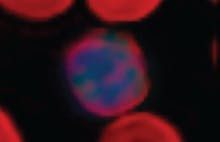Giant Platelets Disorder
Definition, Causes and TreatmentWhat is giant platelet disorder?
Giant platelet disorders are a rare type of blood disorder, affecting only around one in a million people. They are characterized by abnormally large platelets, a low platelet count and abnormally increased bleeding or bruising.
Platelets, also called thrombocytes, are tiny cell fragments. These circulate in the blood and help it to clot when flesh is cut or injured. They form clots by sticking to one another and releasing chemicals such as serotonin, epinephrine, histamine, and thromboxane. These chemicals facilitate the elaborate and complex process of blood clotting.
It is important for platelets to be able to stick to injured blood vessel walls. However, giant platelets are too big to stick properly. This means that clotting cannot happen properly. Therefore, people with giant platelet disorders tend to bleed excessively when injured.
What do giant platelets indicate?
Giant platelets can indicate Bernard-Soulier syndrome. Bernard-Soulier syndrome is a very rare blood clotting disorder. It is hereditary, and is characterized by unusually large platelets and low platelet count. Although rare, Bernard-Soulier syndrome is the most likely cause of giant platelet disorder. Sometimes, the terms “giant platelet syndrome” and “Bernard-Soulier syndrome” are actually used interchangeably.
Excessive bleeding, bruising and nosebleeds can be telltale symptoms of Bernard-Soulier syndrome. It is usually diagnosed in newborns or early childhood. The disorder is often harmless but can cause problems later on during menstruation or injuries. Even a minor sportsfield scrape can result in severe bleeding. This can be very dangerous, and requires immediate medical attention to treat. In severe cases, a blood transfusion may be required.
Other conditions that can be indicated by giant platelets include gray platelet syndrome and May-Hegglin anomaly. Gray platelet syndrome causes giant platelets which are characterized by a gray color. May-Hegglin anomaly is characterized by a recessive gene causing giant platelets. All giant platelet disorders are usually mostly asymptomatic, but can cause excessive bleeding and bruising.
Causes of giant platelet disorder
Giant platelet disorders are hereditary. This means that a child inherits it from their parents, even if the parents do not have the disorder themselves.
The most notable giant platelet disorder, Bernard-Soulier syndrome, is transmitted in an autosomal recessive pattern. The giant platelets cause comes from a genetic abnormality. The gene responsible for the syndrome has been mapped to the short (p) arm of chromosome 17. If both parents carry the gene for Bernard-Soulier syndrome and transmit that gene to the child, the child will be born with the disorder.
This gene is caused by a deficiency of some of the glycoproteins found in the platelets. Even though the parents have a decrease in the glycoproteins, their platelets will still look normal and behave normally, so they experience no excessive bleeding or bruising.
How do you treat giant platelet disorder?
In most cases of giant platelet syndrome, no medications are needed. Treatment is about managing the symptoms, and stopping bleeding episodes from becoming too extreme.
For instance, bleeding episodes may require treatment, such as desmopressin acetate (DDAVP) or antifibrinolytic agents. These should shorten bleeding time, and are useful for treating minor bleeding episodes.
People with giant platelet disorders should avoid anti-platelet medications. If they have a severe case of the disorder, they may need to moderate and alter their activities. For instance, patients may need to avoid contact sports.
In some cases, people with giant platelet disorders may need blood transfusions to treat injury-related hemorrhages or during surgeries.
Discover Sight's Automated Hematology Analyzer
Disclaimer: The content of this knowledge post intends to provide general information related to topics that are relevant to blood diagnostics and may not be used in relation to the operation of Sight OLO. For detailed information on the diagnostic parameters and specifications of Sight OLO, please refer to the official Operator's Manual.

